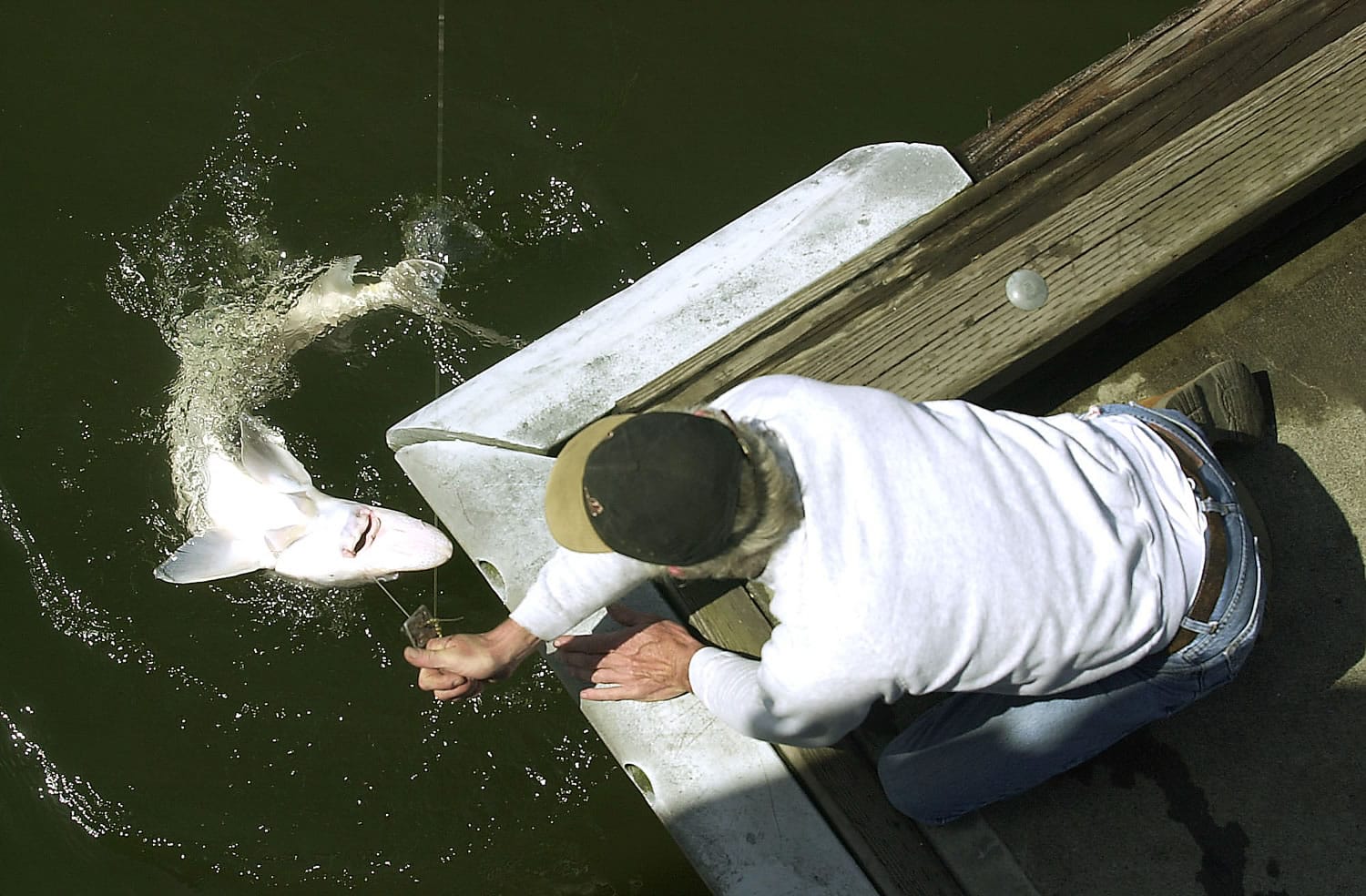TUMWATER — Efforts to resuscitate a sturgeon retention season in the lower Columbia River are not dead quite yet.
The Washington Fish and Wildlife Commission heard two pleas here on Saturday to allow a retention season similar to that of 2013.
Washington and Oregon have closed sturgeon retention in 2014 in sport and commercial fisheries downstream of Bonneville Dam, in the lower Willamette River, Willapa Bay, Grays Harbor and Puget Sound.
The retention ban is to allow the population to rebound from the lows of past years.
However, two methods of estimating the number of legal-size sturgeon in the lower Columbia both indicate the downward trend has stopped and the population has started to increase.
The long-used mark-and-recapture method of estimating the population between Bonneville Dam and the ocean shows 83,400 sturgeon ranging from 38 to 54 inches fork length in 2012.
The method has a lag time to allow tagged fish to be recovered before determining a population estimate. The 83,400 is up from 72,800 in 2011 and 65,300 in 2010.
A newer method involving setlines projects the 2014 legal-size population at 131,700, up from 114,200 in 2013 and 72,700 in 2012.
“It went from 70,000 two years ago to approximately 130,000 — and these are just harvestable fish — this year,” said Larry Swanson of Vancouver, a member of the bistate Columbia River Recreational Advisory Group. “It’s certainly not going to harm the resource.”
Swanson said he’d like the commission to provide specifics as to what is required to reopen a retention season.
Butch Smith of the Ilwaco Charterboat Association also asked for a season like 2013’s. He mentioned that the data indicates there are 114,200 legal-size sturgeon and 663,000 sublegals in the lower Columbia.
“I do believe a combination of undersize and legal size being almost 800,000 warrants revisiting having some kind of small retention.” Smith said.
Sport fishing is important to the coastal economy just as Boeing is important to the Seattle economy, he said.
“We are a conservation-minded group,” Smith said. “We wouldn’t be here if we didn’t feel there’s some room for harvest.”
Heath Heikkila of the Coastal Conservation Association urged the commission to not relent on the retention closure.
CCA members would love a retention fishery, but looking at the recent decline in lower Columbia sturgeon, precautionary management is needed, he said.
CCA experts also question some of the lower Columbia sturgeon population estimates, fearing the confidence levels on the numbers are too large, he added.
Phil Anderson, director of the Washington Department of Fish and Wildlife, said Oregon officials also are getting requests to reconsider the retention ban.
Commission member Robert Kehoe of Seattle said he’s received “numerous requests” about a small retention season and would like some discussion.
Commission member Larry Carpenter of Mount Vernon said the information about the lower Columbia’s juvenile sturgeon population was new to him.
“I’m not sure I totally grasp it,” Carpenter said. “I’d like to know a little bit more about it. I think in all fairness to all the stakeholders we need to discuss it.”
Carpenter also asked Anderson to contact Roy Elicker, director of the Oregon Department of Fish and Wildlife, to “see which way they are leaning.”
“If we wait much longer, and we’re not sending some sort of a signal to Oregon what we’re considering, it’s going to get too late to do anything,” Anderson said.





